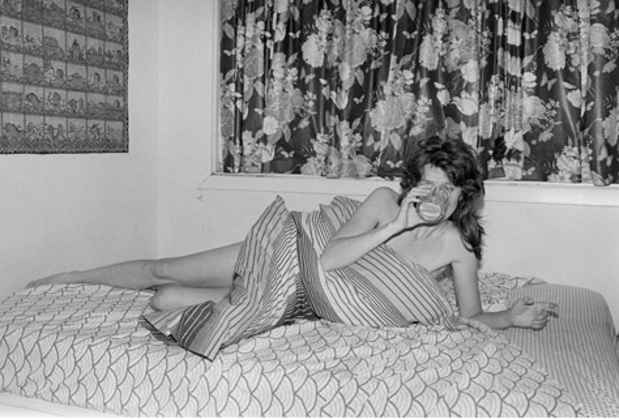Henry Wessel "Vintage Work"
Pace MacGill

This event has ended.
The exhibition marks Wessel's first show at the gallery and features over 30 vintage silver prints made between 1968 and 1987.
Since the 1960's, Wessel has photographed vernacular scenes of the American West, particularly in California. Immediately drawn to the quality of light he encountered during a visit from New York to Los Angeles, Wessel moved cross-country to the San Francisco Bay Area in 1971. From stretches of dusty highway to modest California bungalows framed by telephone poles and palm trees, Wessel's often spare and solitary images capture the idiosyncrasies and irony of American life with a wry objectivity. His photographs of parking lots, beach-goers, and shrubbery-- all illuminated by the brilliance of Western light-- find beauty and intrigue in the commonplace and document the social landscape in a manner that is casual yet formally compelling.
Taking interest in the medium during the rise of documentary photography, Wessel was influenced by such noted practitioners of the genre as Walker Evans and Robert Frank. Following in their tradition, he set out on several road trips across the country to document his findings. Unlike the well-known Western landscape photographers Ansel Adams or Edward Weston, Wessel was uninterested in capturing idealized, uninhabited views of nature. Instead, he recorded man's mark on the American West through images frequently imbued with an element of wit. Wessel's deadpan and often ironic sensibility can be found in "Walapai, Arizona" (1971), where a barren Arizona desert is marked solely by a small white sign reading "Ice." In "Golden Gate Park" (1982), a picturesque couple sits in a row boat surrounded by the lush greenery of a lake. Upon reading the photograph’s title, however, the viewer realizes that both the lake and park are a man made oasis in the urban setting of San Francisco.
While photographers preceding him, including Wessel's mentor Garry Winogrand, traditionally pushed their prints to the darker end of the tonal spectrum, Wessel developed an aesthetic that was based upon the lighter, brighter part of his materials' tonal range to make his photographs look like they were literally lit from within. By over exposing and then under-developing his negatives, Wessel produced prints that exploded with light. Today, as technologically-minded photographers move away from analogue processes, it is interesting to observe Wessel working in a manner now emulated by digital methods.
[Image: Henry Wessel "Untitled" (1982) gelatin silver print 12 1/6 x 18 1/6 in.]
Media
Schedule
from April 21, 2011 to July 08, 2011
The Artist will be in Attendance.
Opening Reception on 2011-04-21 from 17:30 to 19:30